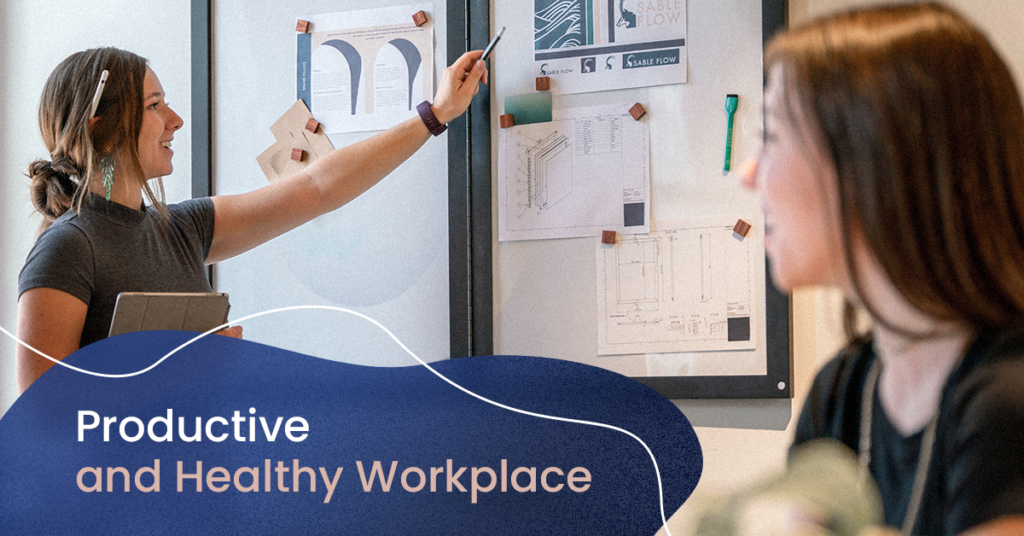Psychological safety in the workplace is a critical factor in creating a healthy and productive workplace. It refers to the belief that one can voice their thoughts, express their concerns, and take risks without fear of repercussions.
In this post, we will delve deeper into the significance of psychological safety in the workplace and scrutinize studies that have analyzed its impact on employee engagement, performance, and well-being. Find out how it means to be in a productive and healthy workplace.
Research has shown that psychological safety is positively associated with employee engagement, job satisfaction, and well-being. Employees who perceive their workplace as psychologically safe are more likely to feel valued and supported, and they are likely to be motivated to give their best. Google’s two-year study on team performance, known as ‘Project Aristotle’, found that psychological safety was the most crucial factor contributing to a team’s effectiveness. This study revealed that teams with a high level of psychological safety demonstrated better communication, heightened levels of innovation, and improved team dynamics.
Psychological safety also plays a crucial role in promoting a positive work-life balance. Employees who feel secure in their workplace are more likely to experience less stress and more fulfillment in their work, leading to improved overall well-being and increased productivity.
Moreover, psychological safety is indispensable in creating a culture of continuous learning and growth. When employees feel safe to articulate their thoughts and ideas, they are more prone to share their experiences and perspectives, fostering innovation and superior decision-making. This dynamic results in an environment where employees feel supported and encouraged to continuously hone their skills and enhance their performance.
Recognizing and Addressing a Lack of Psychological Safety
For those who may not feel psychologically safe at work, it’s essential to recognize the signs and take steps to address the situation. Here are some indicators that your workplace may lack psychological safety:
- Fear of speaking up: If you constantly worry about the consequences of expressing your ideas or concerns, this could indicate a lack of psychological safety.
- Reluctance to take risks: Feeling hesitant to propose new ideas or take on challenging tasks for fear of failure or criticism suggests an unsafe environment.
- Feeling undervalued: If your thoughts and opinions are often dismissed or overlooked, this could point to a lack of psychological safety.
- High-stress levels: Chronic stress, anxiety, or a sense of dread related to work can signal a psychologically unsafe workplace.
- Lack of trust: A constant need to watch your back, cover your tracks, or mistrust in your colleagues or superiors can suggest a lack of psychological safety.
Once you’ve recognized these signs, here are steps you can take to address the issue:
- Open Communication: Start by having an open conversation with your supervisor or HR representative about your feelings and experiences. Use specific examples and explain how these instances make you feel. It’s important to communicate your concerns professionally and constructively.
- Seek Support: Talk to your colleagues about your experiences. They might share your feelings, and there can be strength in numbers. Together, you might be able to address the issue more effectively. You can also find strength and support from mentors.
- Set Boundaries: Ensure you have boundaries in place to protect your well-being. This can involve setting limits on work hours, taking regular breaks, and ensuring you have time to relax and recharge.
- Professional Help: If your workplace environment is affecting your mental health, consider seeking professional help. A mental health professional can provide strategies to cope and guide you through your options, which may include finding a new job in a more supportive environment.
- Self-care: Prioritize self-care, including regular exercise, a healthy diet, and adequate sleep, to reduce stress and increase your resilience.
Everyone has a right to a psychologically safe work environment. If your current workplace doesn’t provide this, it may be necessary to consider seeking employment elsewhere. While this can be a difficult decision, prioritizing your mental health and well-being is of the utmost importance.
How to create psychological safety as a leader and manager
Creating a psychologically safe workplace requires a collaborative effort between managers and employees. Managers should set the tone by creating an environment that encourages open communication, trust, and respect. This can be achieved by actively listening to employees, recognizing their perspectives, and displaying empathy. Here are a few specific strategies:
- Regular Feedback: Managers should implement a structure for regular, constructive feedback, which can help employees learn and improve.
- Open Forums: Organizing town-hall meetings or open forums where employees can voice their thoughts or concerns without fear can go a long way in fostering psychological safety.
- Encourage Risk-Taking: Managers should encourage employees to take calculated risks and promote a no-blame culture where failures are treated as opportunities to learn.
- On their part, employees can also contribute by speaking up for their needs and participating in open and honest discussions with their peers.
In conclusion, psychological safety is a linchpin in the creation of a healthy and productive work environment. Studies, such as Google’s Project Aristotle, show that psychological safety is positively correlated with employee engagement, job satisfaction, well-being, and team performance. By working together, managers and employees can create a psychologically safe workplace, which can result in improved outcomes and heightened success.
Follow OneUpOneDown on Facebook, LinkedIn, Twitter and Instagram to stay tuned with the latest news.
